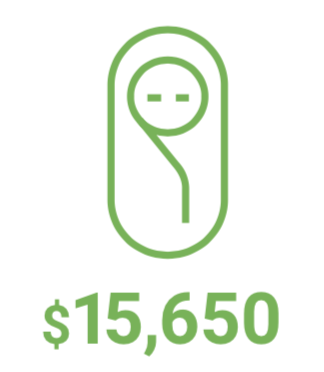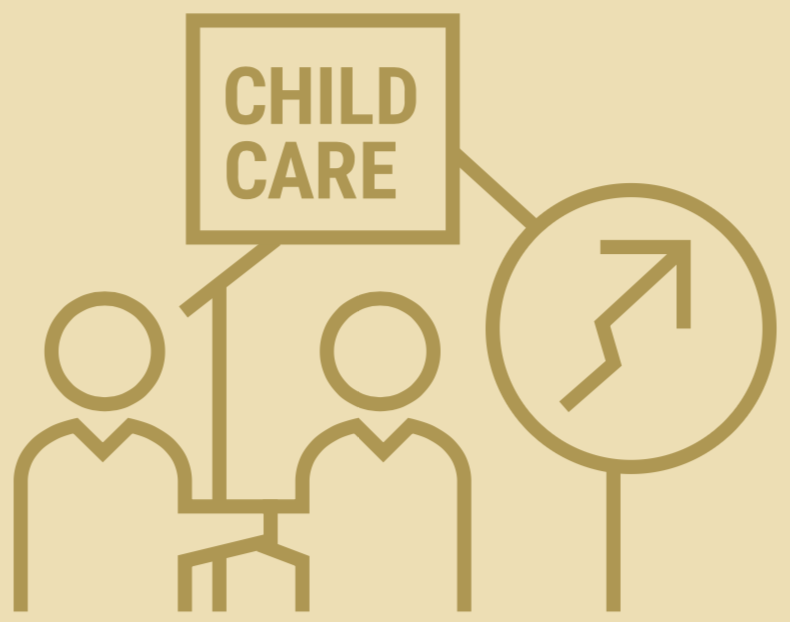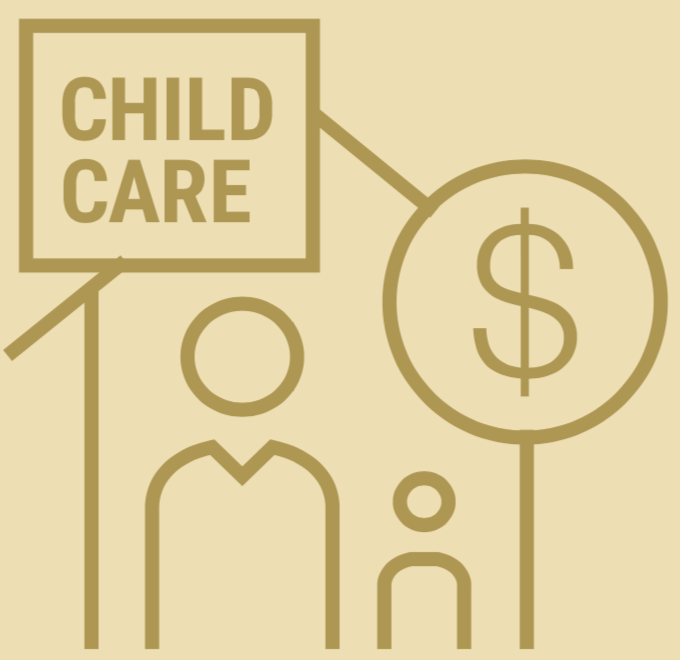Child Care and its Impact on Orange County’s Economy
Addressing the Child Care Crisis Is Critical for All
Child Care Business Program
In partnership with Orange County Community Foundation’s Workforce Development Initiative, First 5 Orange County helped launch a child care business program with the Small Business Development Center, CIELO (Community for Innovation, Entrepreneurship, Leadership and Opportunities), Orange County Association for the Education of Young Children, Orange County Department of Education, and other partners.
In the program, future child care providers spend two months building their knowledge of business basics, early child development, and how to operate a child care program.
additional child care slots could be created through this program
Champions of Child Care
Orange County is facing a significant lack of child care for children in their first three years of life, and what is available is not considered affordable for most families. In 2022, First 5 OC launched the Child Care Task Force, a cross-sector group of parents, employers, city representatives, child care providers, legislators, and philanthropists working together to develop and implement local solutions to the child care crisis in Orange County.
We introduce our Champions of Child Care and sit down with Task Force members to learn more about their unique perspectives and connections to the cause.
Infant and Toddler Child Care Access
Child care impacts our local economy and parents’ ability to work and provide for their families. The economics of offering infant and toddler care, particularly with the advent of universal transitional kindergarten, makes it difficult for Orange County child care providers to meet the need. It is possible to make the economics of providing infant and toddler care more sustainable, and in the process increase slots for infants and toddlers, make them more affordable, and retain family child care choice.

Availability
Child Care Licensed Slots available in Orange County
(a percentage of population)
- Infants and Toddlers 5%
- Preschool-age Children 70%
A 2020 analysis of the Orange County Child Care Landscape reveals there are only enough licensed slots for 5% of OC’s population of infants and toddlers. By comparison, there are slots available for 70% of preschool-age children (3-4 years of age).
* First 5 Orange County Child Care Landscape
21
infants and toddlers for every licensed care slot available in Orange County
Cost to Families (price of care)

Child care in the first three years of life is costly. The average annual price of full-time, center-based care in Orange County for 1 infant/toddler is $15,650. For families that are just above the eligibility threshold for a subsidy, the burden is significant.

of Orange County infants and toddlers eligible for child care subsidies receive them
Economic Realities for Child Care Businesses
The economics of providing child care for infants/toddlers are a challenge for child care businesses
– It costs more to serve infants and toddlers than preschool-age children due to higher provider-to-child ratios.
– Providers can’t charge the true cost of infant/toddler care because it is unaffordable for most families.
– Providers must enroll preschool-age children to subsidize the cost of providing infant/toddler care.
– As families shift their 4-year-old to no-cost public transitional kindergarten, private providers are increasingly struggling to balance the books while continuing to serve infants and toddlers.
Reimbursement from the state for subsidized care can help make care more affordable, but infant/toddler reimbursement rates are currently insufficient as calculated.
Reimbursement rates are set at 75% of the regional market rate for care depending on the age of the child. Regional market rates are determined by measuring the prices charged by child care providers and paid by
parents within a given child care market
region.
But because providers cannot charge families the true cost of providing infant/toddler care, the regional market rates for infant/toddler care are artificially low and therefore reimbursement rates are also unrealistically low for this age group.

Provider-to-child ratio for center-based care for infants aged 0-2 years is 1:4 and 1:12 for children aged 2-6
For instance, required staff ratios are three times higher for infant/toddler care than for preschool-age care, but the reimbursement rate for infant/toddler care is only 1.4 times higher than for preschool-age care.
The Impact
On the Orange County Economy:
A 2021 economic analysis quantifies the impact of child care issues on the Orange County economy.
“Lack of adequate affordable child care is taking working parents out of the workforce talent pool. There is a gap with women leaving the workforce. Many working mothers are working to just pay the cost of child care.”
City of Irvine Staff
jobs lost annually due to disruptions or gaps in child care
* First 5 Orange County Child Care Landscape
billion annual productivity and wages lost
million annual tax revenue lost
On Orange County Families:
In 2021 First 5 Orange County conducted a survey of Orange County families that indicates that child care issues impact parents and guardians. More than 40% of Orange County parents and guardians report that the cost and/or lack of child care has prevented them from working at some point.
“Most of my income pays for childcare – it doesn’t make much sense, but I am working so that when they are older and don’t need childcare, I have a job”.
OC Parent
1 in 5 parents arrive late to work due to gaps in child care.
1 in 6 parents have to leave work early on a regular basis.
1 in 10 parents chose to resign or lost their jobs due to child care challenges.
1 in 11 parents are forced to reduce their hours or can’t take full-time positions.
As of January 2021, 4x as many women than men left the workforce.
Women of color have been hit particularly hard
Women involuntarily working part-time (As of January 2021)
- Latina 28%
- Black 24%
- Other 17%
Female labor force participation is declining, and was hit particularly hard by the pandemic
4 times
as many women as men left the workforce in January, 2021
1980
female labor force participation has fallen to its lowest point since the 1980s
On Orange County Providers:

Private providers are struggling to stay in business in the current child care market. For center-based, faith-based, and family-home settings, offering care for infants and toddlers increasingly does not pencil out. This puts private child care providers out of business, reducing available slots and child care choices for families.
“We would like to be able to serve more infants and toddlers, but we can’t because the costs for infants and toddlers is higher and our preschool-age children make it possible for us to serve the babies. If we lose preschool kids, it reduces our ability to serve infants and toddlers.”
OC Child Care Provider
Strategies and Solutions
First 5 Orange County is working with partners to:

Expand access to affordable quality infant/toddler child care and education
Increase funding and expand eligibility for subsidies through the California Alternative Payment Program (CAPP).

Increase Infant and Toddler Slots
Expand subsidized care through the state General Child Care and Development (CCTR) programs.
Convert current preschool slots to infant and toddler care.

Ensure Family Choice
Help families better understand the choices available to them and how to navigate to what they need.

Provide Business Assistance
Fund technical assistance for child care businesses and entrepreneurs to support the opening, stability, viability, and expansion of quality child care.

Advance Economic Viability
Advocate for increased reimbursement rates for child care providers to help cover the high costs of infant and toddler care and pay for necessary renovations of facilities.
Ensure that private child care providers have access to funding on par with public providers/transitional kindergarten.
Following the release of the Child Care Landscape Analysis in October 2020, First 5 Orange County invested in a second phase to inform action.
- Data was collected both pre- and during the pandemic
- Default data is not COVID-specific unless otherwise stated
Child Care Landscape Analysis
Data Analysis on the Supply of Child Care in OC. In-depth interviews with 20+ child care experts.
Economic Analysis
Conducted by Dr. Wallace Walrod, TCCG, LLC. Utilizes Emsi (Economic Modeling Specialists International) and U.S. Chamber of Commerce data.
Family Perspective
Survey completed by more than 1,220 parents/guardians (in English & Spanish). In-depth interviews with 21 parents representing a broad cross section of Orange County.
Employer Perspective
52 Orange County employers provided input, representing over 71,000 employees. In-depth Interviews + employer survey.
It’s even harder in Orange County where the cost of living is so high that the majority of families with young children rely on all parents/caregivers to work.
Many parents and guardians don’t work or sacrifice due to the cost of child care.
“It is not worth working just to pay for child care, so our family chose for me to quit my job and care for our children myself.”
“Most of my income pays for child care — it doesn’t make much sense but I am working so that when they are older and don’t need child care, I have a job.”
“I can not work because child care is too expensive.”
The high price of child care does not mean providers are earning healthy profits.3

Child care providers are small businesses themselves, and are often struggling
Costs to deliver quality care are high, especially for infants and toddlers
Low child/caregiver ratios and supplies needed for infant/toddler care drive up costs
COVID-related requirements have further increased providers' costs
While there has been a significant effort to support them through CAREs Act funding and forgivable PPP loans, many child care providers are still struggling
Quality Child Care Is Critical for Child Development
The quality of a child’s experiences (including child care) affect how the brain develops … so we must address child care challenges for children, working parents, our region’s economy and society as a whole.


